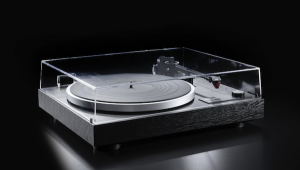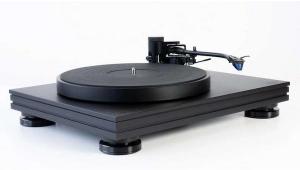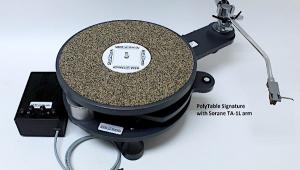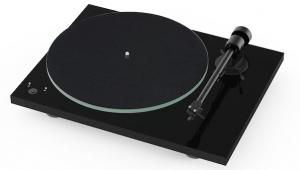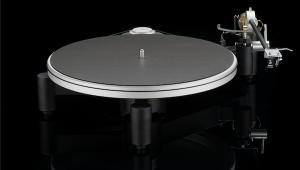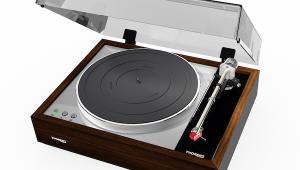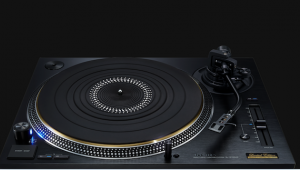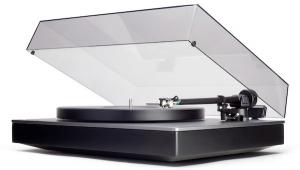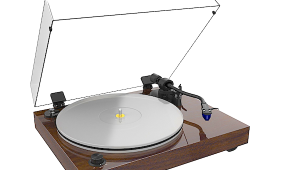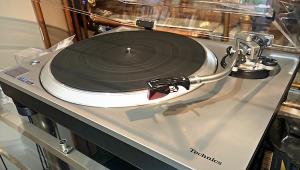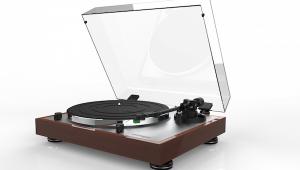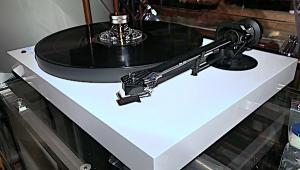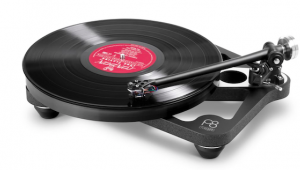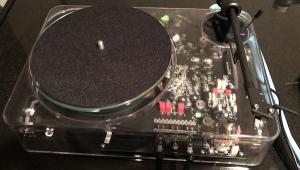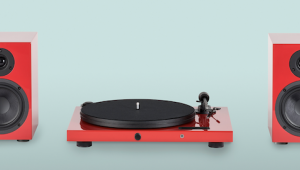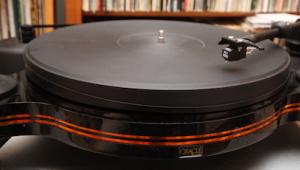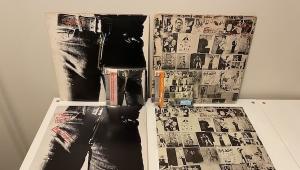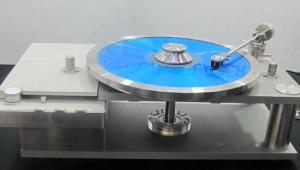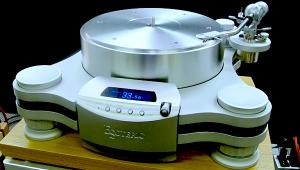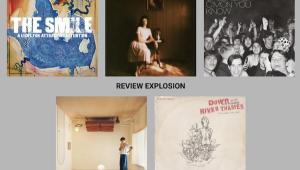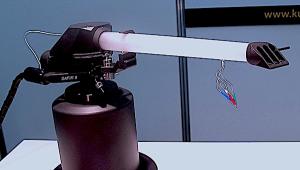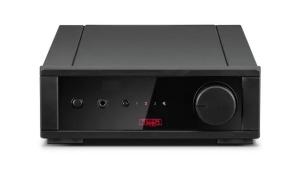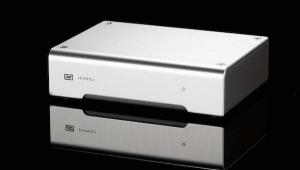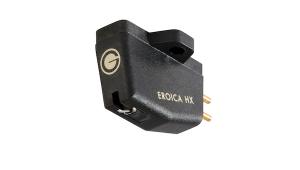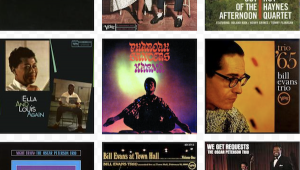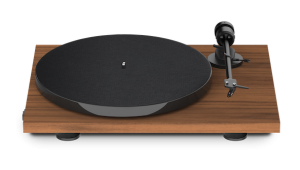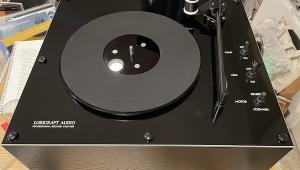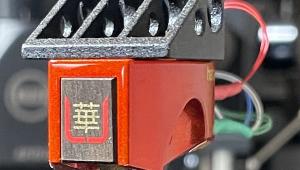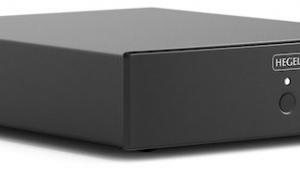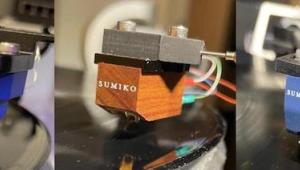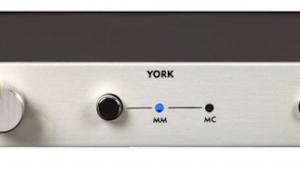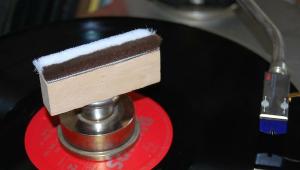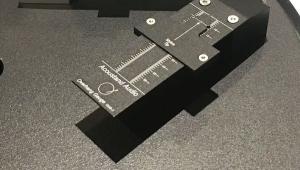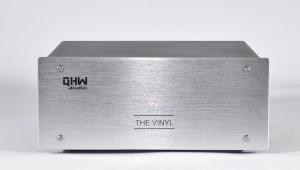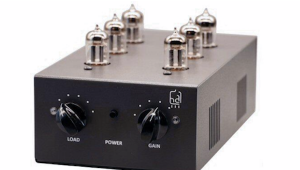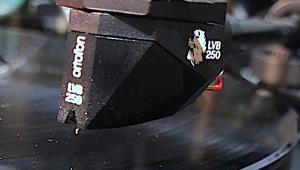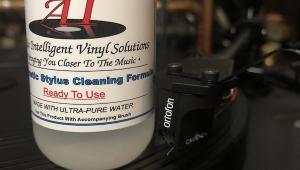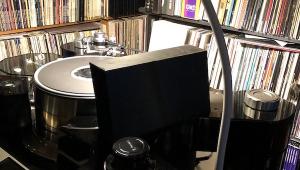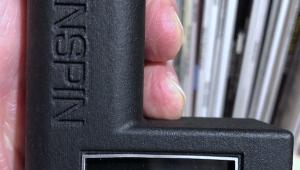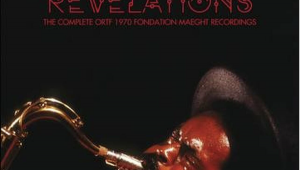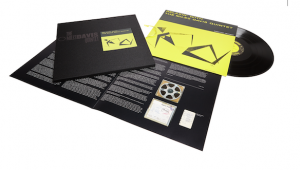VPI Traveler Plants American Flag on Mid-Entry Level Turntable Territory
Until VPI surprised the turntable world last year with the Traveler, the only American-made ‘table manufactured at this price that I can think of is the SOTA Comet, which comes with an OEM Rega tonearm.
The Traveler turntable is not only new from the ground up (though it relies upon VPI’s decades-long turntable designing and manufacturing expertise), but so is the tone arm, which took long time VPI watchers totally by surprise.
Rega OEM and Jelco budget models are the “go to” arms for most manufacturers at this price point since the costs of designing and tooling up for a new tone arm are high.
The new 10.4” Traveler moderate mass tone arm features spring loaded steel pins that fit into ultra-low friction sapphire gimbaled bearings for both vertical and horizontal movement. While this makes setting azimuth impossible, that’s true of all fixed gimbaled bearing tone arms including the SME V. The tradeoff benefit is that for vinyl newbies and more casual listeners, set-up in made that much easier.
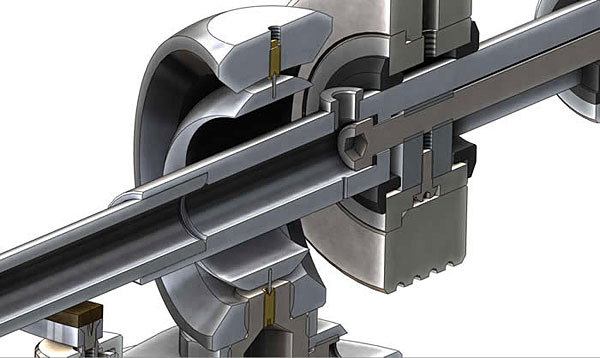
The counterweight system features a threaded stub and Delrin counterweight carrier. After attaching the counterweight to the carrier, VTF adjustment is via a knurled knob riding on the threaded stub. It’s a precision mechanism that’s rarely found on arms included on turntables at this price point. VPI even throws in Shure’s basic, but reasonably reliable “teeter-totter” type stylus pressure gauge that’s been in production probably since Eisenhower was president.
Everything about the arm’s design and fit’n’finish is remarkable considering it’s included in a relatively high mass made in America turntable costing but $1500.
Compared to most if not all other ‘tables at this price point, the Traveler’s plinth is massive. The entire assembled turntable weighs 24 pounds, approximately 7 pounds of which is the damped aluminum and stainless steel platter, modeled on the larger, more massive ones offered on VPI’s more expensive ‘tables.
There’s a case to be made both technologically and price-wise for ultra-low mass, energy transmitting designs such as those from Rega, which use lightweight plinths, plastic sub-chassis and glass platters, but at this price point, to make available one that includes a relatively massive aluminum and acrylic plinth and an aluminum and stainless steel full sized platter and a large diameter spindle bearing that makes most at this price point look like undernourished toys and a precision sapphire gimbaled bearing tonearm and a new 600 rpm low-noise motor, is nothing short of remarkable.
You can watch two “quick and dirty” Traveler set-up videos that cover, among other things, installing the bearing, locking down the threaded spindle, installing the belt, etc.
A Delrin tone arm mounting system includes an opening for the arm’s threaded circular mounting post and one for the integrated Delrin armrest. Once the arm and rest have been lowered into place you tighten a large Delrin grub screw to secure the arm as well as a second smaller one to secure the height adjustable armrest.
After installing the cartridge of your choice using the supplied paper overhang gauge, you can adjust VTA/SRA by loosening the grub screw and rotating a large threaded ring riding on the threaded mount. It’s a simple, yet effective system. Once you’ve set it to your satisfaction you tighten the grub screw and snug down the ring to the mount.
You’ll then want to raise or lower the armrest to level the arm in the rest, though this is more for esthetic purposes. Now is a good time to check the operation of the cueing mechanism to be sure the stylus clears the record when it’s raised and also to see that the cueing platform lowers sufficiently to clear the arm so it can track the record. It’s easy to adjust the mechanism’s height and lateral position by loosening and then tightening another grub screw.
The lack of anti-skating was somewhat troubling, because all things being equal, it means that the stylus will be riding on the left side groove wall. The arm's 10.4” effective length counters that somewhat since the longer the arm, the less the offset angle and the less the offset angle the less the arm will skate.
I used the Telarc Omnidisc anti-skating test track to check the arm’s skating, 100% sure that the distortion would appear first on the right channel, meaning the arm is “biased” towards the left hand wall because of the arm’s skating inward and sure enough that’s what occurred.
However, by the time the distortion occurred the modulation level was so high, you will never encounter a record cut that hot, thereby confirming that on this 10.4” arm with its looped thick wire that produces a degree of anti-skating force, the combination is sufficient to render moot the skating issue. That’s one less set-up parameter about which to worry.
In other words, even if this is your very first turntable, there’s no reason you can’t have it up and running all by your lonesome within a very short period of time.
And Once You’ve Done That?
The one thing VPI doesn’t include is a set of tone arm interconnects. You’ll need a set of RCA/RCA cables. Don’t skimp here. Don’t use some old cables left over from your old VCR (though of course there are cultists who claim that the ones that were included with Sony’s Betamax Hi-Fi machines from the late ‘80s are "magical"). Get some dedicated low capacitance, low resistance phono cables and whatever you use keep it at 1 meter maximum!
VPI does include a mesh mat made of a material used mostly for lining dishware shelves. I’ve seen it marketed separately as a turntable mat priced ridiculously. My advice is: DON’T USE IT!. Why? It leeches some kind of sticky, oily gum that you’ll have a terrible time getting off your record if you leave it on the platter for too long. If you own a Traveler and you’re using the mat, remove it from the platter and look what it’s left on it: a sticky imprint of the mat that you’ll have a hell of a time removing from the platter surface. Perhaps you don’t see it on the record surface but don’t be so sure it’s not in the grooves unseen and gumming up your stylus. My advice to VPI: axe the mat!
I tried a few but my favorite was Boston Audio’s Mat 1 graphite mat. Yes it costs $199 but I thought it took the ‘table to another performance level of low coloration sonic smoothness. If that’s too much try a Ringmat or the Music Hall Cork Mat. While cork is an okay material for a mat I thoroughly disagree with decoupling a record from the platter, which is what the outer cork circles accomplish. As the description on musicdirect’s website claims, the mat allows the vinyl to “speak” on its own. I don’t know about you, but I want my vinyl to SHUT UP and let the music speak.
In any case, this ‘table is remarkably quiet, goes very deep, particularly for a ‘table at this price point and while it lacks the full bodied bass authority of the bigger ‘tables including VPI’s far more expensive Classic models, the bass control is ridiculously good for this kind of money. It’s tight, punchy and very fast, which means that whatever “speaking” the vinyl does with the Cork Mat, will be well controlled and won’t confuse the music’s rhythm’n’pacing.
I’m in the middle of the long-promised moderately priced cartridge survey using the Traveler and I understand why VPI recommended and packages the Grado Prestige Gold 1 cartridge. It’s got a bit of excessive bass, but the ‘table has less than full weight though it’s so well controlled that when you combine the ‘table’s personality with the cartridge’s the results on bottom are spectacular! The bottom end produced by that combination will embolden even the most reticent of two-way stand mount speakers without producing sogginess.
I checked the ‘table’s speed accuracy using the Feickert iPhone app and test record and it ran slightly fast. While the ‘table specs at .1%, the review sample was .2% fast. Thus the 3150Hz test tone was reproduced at approximately 3200Hz (when this review was first published I accidentally wrote 4000Hz). This is nothing to write home about. It’s minor.Wow and flutter based on the Feickert app were also low, though given that virtually all test records and all records are eccentric to one degree or another I take such measurements with a large pile of salt, preferring to judge by listening and judging that way, the Traveler has very low wow and flutter. It produces a sense of forward motion, ease and drive usually experienced listening to more expensive turntables.
So how did the Traveler sound? Less colored and more extended top and bottom than any $1500 turntable has a right to be and very quiet. With the right mat in place its suppression of pop and click impulses was impressive. It tracked well with moderately priced cartridges the most demanding musical tests and when just for the fun of it I installed a $6500 Lyra Titan i the results were just plain silly good. I’m not going to go through a list of recordings I like and how great they sounded on the ‘table because I’m frankly getting tired of such reviewing.
The variety of modestly priced cartridges I used in the cartridge showdown to be posted soon (finally!) demonstrated that like all good ‘tables, it was chameleon-like, allowing the transducer’s character to shine through while imparting little of its own flavor onto the proceedings.
I remember reviewing favorable a few years ago the very good and similarly priced Clearaudio Concept turntable, which has a platter of POM, a Delrin like material and a magnetic bearing tone arm. I am of the “old school” who believe that mechanical energy transfer is very important. The stylus/groove interface produces an enormous amount of energy. Some of it remains in the record, which is why you want a good vinyl/platter interface to drain it, and most of it travels up into the arm tube, which is why you want both a well damped arm tube and a solid mechanical path for the dissipation of the energy. A magnetic bearing does not produce a solid mechanical path and that’s the reason I gave for why I thought the Concept sounded very warm as if the energy remained in the tube and made its way back to the cartridge.
Now I have no way of being certain that was the cause of the noticeable warmth, pleasing as it was, but I have no doubt that the Traveler is a more neutral sounding turntable.
Conclusion
You can draw that yourself but if you insist: for $399 I’m all for the Pro-Ject Carbon but if you can enter the analog world at $1500, the Traveler is at the top of the heap in my analog experience.
It’s beautifully and solidly built, has more mass than any $1500 has a right to have—and in all the right places as my fellow Stereophile writer Stephen Mejias said in his excellent review there—is built in America (am I being overly chauvinistic?), and to add icing to the analog cake, a portion of the profit goes to fight Pancreatic cancer (designer Harry Weisfeld’s late wife Sheila died from it) and to the Girls Scouts of America.
.

